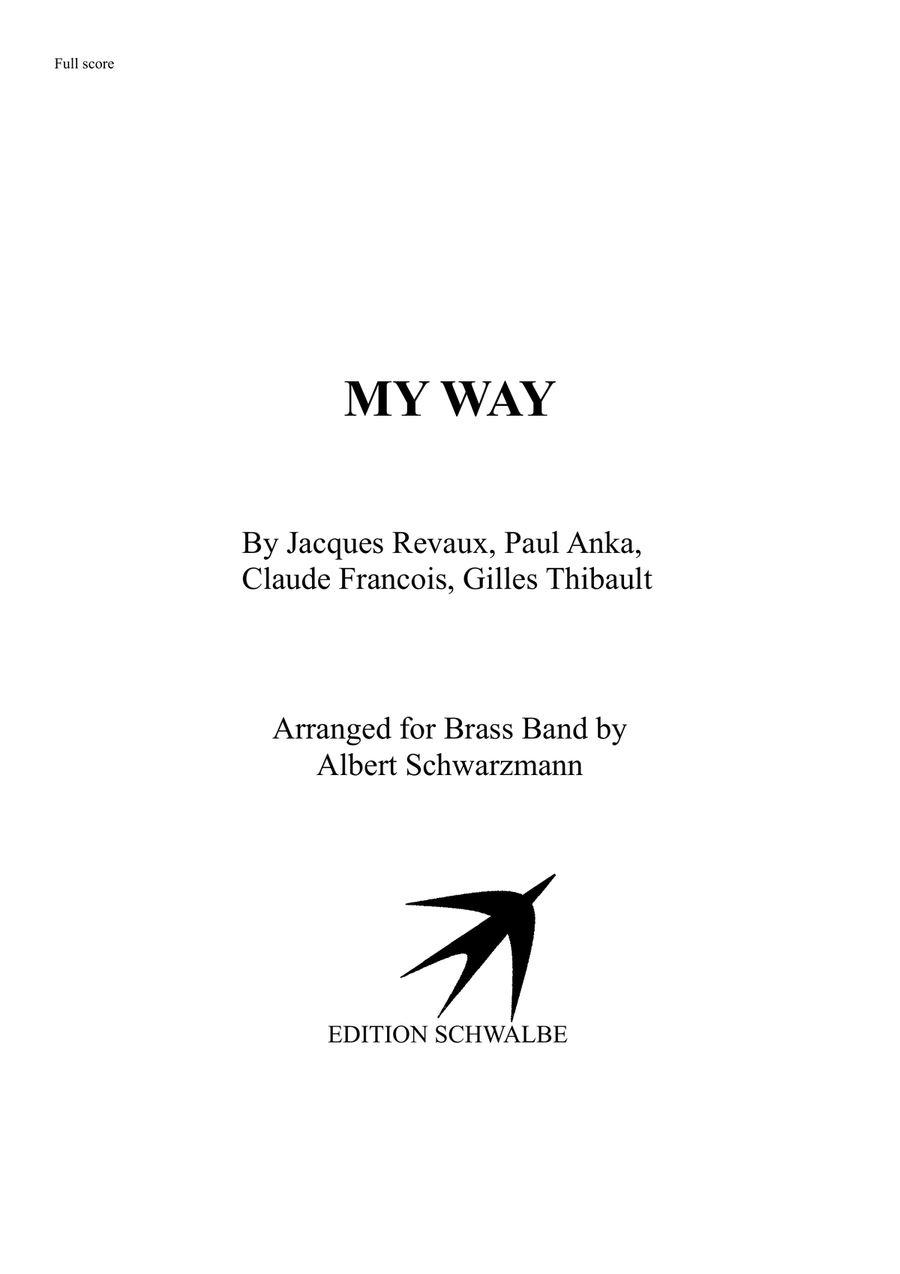Mixed Percussion B-Flat Tuba,B-Flat trombone,Baritone Horn TC/Euphonium,Bass Trombone,E-Flat Cornet,E-Flat Tenor Horn,E-Flat Tuba TC,Flugelhorn,Percussion 1,Percussion 2,Tenor Trombone - Level 4 - Digital Download SKU: A0.1487834 By Frank Sinatra. By Claude Francois, Gilles Thibault, Jacques Revaux, and Paul Anka. Arranged by Albert Schwarzmann. 20th Century,Jazz,Pop,Singer/Songwriter. Brass Band. 61 pages. Edition Schwalbe #1064771. Published by Edition Schwalbe (A0.1487834). This arrangement for brass band was written 2011 after carefully listening to the recording by Frank Sinatra. It was a wish of my colleague Hannes Buchegger, long-term conductor of the Austrian Brass Band Fröschl Hall and Brass Band Oberöstrreich, who premiered it with himself as vocal soloist. A recording is available at: CD Three cheers for 25 Years, Brassband Fröschl Hall, rcr Nr. 1122, www.mayrmusic.at.
